|
시장보고서
상품코드
1529642
유전자 치료 시장 규모, 점유율, 동향 분석 보고서 : 적응증별, 벡터 유형별, 투여 경로별, 지역별, 부문별 예측(2024-2030년)Gene Therapy Market Size, Share & Trends Analysis Report By Indication (Acute Lymphoblastic Leukemia, Large B-cell Lymphoma), By Vector Type (Lentivirus), By Route Of Administration, By Region, And Segment Forecasts, 2024 - 2030 |
||||||
유전자 치료 시장 성장과 동향:
Grand View Research, Inc.의 최신 보고서에 따르면, 세계 유전자 치료 시장은 2024년부터 2030년까지 18.88%의 CAGR을 기록하며 2030년까지 182억 달러에 달할 것으로 예상됩니다.
시장 개척의 배경에는 유전자 치료 기반 발견의 증가, 이 분야에 대한 투자 증가, 유전자 치료 제품의 승인률 증가가 있으며, WHO에 따르면 2025년까지 매년 10-20개의 새로운 세포 치료제와 유전자 치료가 승인될 것으로 예상됩니다.
재조합 DNA 기술의 지속적인 발전으로 향후 몇 년 동안 유전자 치료의 효율성이 높아질 것으로 예상됩니다. 따라서 유전자 재조합 DNA 기술의 지속적인 발전은 유전자 치료 임상시험의 수를 확대할 것으로 예상됩니다. 이러한 발전은 주로 제품 연구 개발을 강화하기 위한 다양한 유전자 편집 도구와 발현 시스템의 맥락에서 이루어지고 있으며, CRISPR/Cas9 뉴클레아제, ZFN, TALEN의 출현으로 쉽고 정확한 유전체 편집이 가능해졌습니다. 그 결과 최근 유전자 편집 분야에서 많은 연구 활동이 이루어지고 있으며, 이는 유전자 치료 시장의 성장에도 영향을 미칠 것으로 예상됩니다.
유전자 치료 시장의 성장은 암 유병률 증가로 인해 큰 수혜를 받을 것으로 예상됩니다. 연간 암 환자 수와 관련 사망자 수의 지속적인 증가는 강력한 치료 솔루션 개발의 필요성을 강조하고 있으며, 2020년에는 전 세계적으로 약 1,810만 명의 암 환자가 새로 발생했으며, 이 중 930만 명은 남성, 880만 명은 여성입니다. 종양 유전자 연구의 지속적인 발전은 암과 관련된 분자 시그니처에 대한 실질적인 정보를 제공하여 암 치료제의 진행 중인 임상시험을 지원할 것으로 기대됩니다.
강력한 질병 치료에 대한 수요가 증가함에 따라 기업들은 유전체 수준에서 질병의 원인을 표적으로 삼는 효과적인 유전자 치료의 연구 개발을 가속화하는 데 초점을 맞추고 있습니다. 또한 미국 FDA는 제품 제조와 관련된 여러 정책을 통해 이 분야의 혁신을 지속적으로 지원하고 있으며, 2020년 1월 FDA는 안전하고 효율적인 제품 제조 및 임상 개발에 대한 6가지 최종 가이드라인을 발표했습니다.
또한, 세포 치료 및 유전자 치료를 위한 시설 확장은 유전자 치료 시장의 성장을 촉진하는 주요 요인 중 하나입니다. 유전자 치료 제조를 위한 여러 자체 시설과 CDMO는 생산능력을 강화하기 위해 투자를 시작했으며, 이는 시장 플레이어에게 유리한 기회를 창출할 것으로 예상됩니다. 예를 들어, 2022년 4월 FDA는 노바티스의 노스캐롤라이나주 더럼 시설에 대한 상업적 허가를 승인했습니다. 이 승인으로 170,000평방피트 규모의 시설에서 졸겐마의 제조, 시험, 판매 및 현재 및 향후 임상시험용 치료 제품을 생산할 수 있게 되었습니다.
유전자 치료 시장 보고서 하이라이트
- AAV 부문은 2023년 22%의 높은 매출 기여도를 보였습니다. 여러 바이오 제약사들이 AAV 기반 유전자 치료 제품 개발을 위해 바이러스 벡터 플랫폼을 제공하고 있습니다.
- 적응증별로는 척수성 근위축증(SMA) 분야가 2023년 46.8%의 점유율로 시장을 장악했습니다. 척수성 근위축증은 드문 질환이지만, 영유아기에 치명적인 유전성 질환 중 가장 흔한 질환 중 하나입니다.
- 예측 기간 동안 가장 빠른 CAGR 38.3%를 기록할 것으로 예상되는 분야는 B형 지중해 빈혈/SCD 분야로, SCD 및 B형 지중해 빈혈에 대한 유전자 치료는 유전자 변형 조혈모세포 이식을 기반으로 하고 있습니다.
- 2023년 북미가 65.2%의 최대 매출 점유율로 시장을 장악했습니다. 이 지역은 예측 기간 동안 승인 건수 및 매출 측면에서 유전자 치료의 가장 큰 일상적인 제조업체가 될 것으로 예상됩니다.
- 유럽은 2024년부터 2030년까지 가장 빠르게 성장하는 지역으로 추정됩니다. 이는 미충족 의료 수요가 많은 인구가 많고, 희귀하지만 점점 더 널리 퍼지고 있는 질병을 치료하기 위한 새로운 기술에 대한 수요가 증가하고 있기 때문으로 분석됩니다.
목차
제1장 조사 방법과 범위
제2장 주요 요약
제3장 시장 변수, 동향, 범위
- 시장 계통 전망
- 상부 시장 전망
- 관련/보조 시장 전망
- 시장 역학
- 시장 성장 촉진요인 분석
- 시장 성장 억제요인 분석
- 시장 기회 분석
- 업계 분석 툴
- Porter's Five Forces 분석
- PESTEL 분석
- COVID-19의 영향 분석
제4장 투여 경로별 비즈니스 분석
- 유전자 치료 시장 : 투여 경로별 변동 분석
- 정맥내
- 기타
제5장 적응증별 비즈니스 분석
- 유전자 치료 시장 : 적응증별 변동 분석
- 급성 림프구성 백혈병
- 유전성 망막 질환
- 대세포형 B세포 림프종
- 악성 흑색종(병변)
- 베타 지중해 빈혈 중증형/겸상적혈구증(ScD)
- 척수성 근위축증(SMA)
- 기타
제6장 벡터 유형별 비즈니스 분석
- 유전자 치료 시장 : 벡터 유형별 변동 분석
- 렌티바이러스 벡터
- 아데노연관바이러스(Aav) 벡터
- 레트로바이러스와 감마 레트로바이러스
- 개변 단순포진바이러스
- 아데노바이러스 벡터
- 기타
제7장 지역별 비즈니스 분석
- 유전자 치료 시장 점유율 : 지역별, 2023년과 2030년
- 북미
- 유럽
- 아시아태평양
- 세계 기타 지역
제8장 경쟁 상황
- 기업 분류
- 전략 매핑
- 기업 시장 상황 분석, 2023년
- 기업 개요
- Amgen Inc.
- Novartis AG
- F. Hoffmann-La Roche
- Gilead Sciences, Inc.
- bluebird bio, Inc.
- Bristol-Myers Squibb Company
- Legend Biotech.
- BioMarin.
- uniQure NV
- Merck &Co.
- Sarepta Therapeutics, Inc.
- Krystal Biotech, Inc
- CRISPR Therapeutics.
Gene Therapy Market Growth & Trends:
The global gene therapy market is expected to reach USD 18.20 billion by 2030, registering a CAGR of 18.88% from 2024 to 2030, according to a new report by Grand View Research, Inc. The development of the market is owing to an increase in the number of gene therapy-based discoveries, increasing investment in this sector, and rising approval of gene therapy products. According to the WHO, 10 to 20 new cell and gene therapies are expected to be approved each year by 2025.
Continuous developments in recombinant DNA technology are anticipated to enhance the efficiency of gene therapy in the coming years. Hence, ongoing progresses in recombinant DNA technology are anticipated to expand the number of ongoing clinical trials for gene therapy. Primarily, these advancements are taking place in the context of various gene-editing tools and expression systems to augment the R&D for products. The advent of CRISPR/Cas9 nuclease, ZFN, and TALEN allows easy & precise genome editing. As a result, in recent times, the gene-editing space has witnessed a substantial number of research activities, which, in turn, is expected to influence the growth of the gene therapy market.
The growth of the gene therapy market is expected to be majorly benefitted from the increasing prevalence of cancer. The ongoing increase in cancer patients and related death per year emphasizes the essential for the development of robust treatment solutions. In 2020, there were around 18.1 million new cases of cancer worldwide. 9.3 million of these cases involved men, while 8.8 million involved women. Continuing developments in tumor genetic studies have delivered substantial information about cancer-related molecular signatures, which in turn, is expected to support ongoing clinical trials for cancer therapeutics.
With rising demand for robust disease treatment therapies, companies have focused their efforts to accelerate R&D for effective genetic therapies that target the cause of disease at a genomic level. . Furthermore, the U.S. FDA provides constant support for innovations in this sector via a number of policies with regard to product manufacturing. In January 2020, the agency released six final guidelines on the manufacturing and clinical development of safe and efficient products.
Furthermore, facility expansion for cell and gene therapies is one of the major factors driving the gene therapy market growth. Several in-house facilities and CDMOs for gene therapy manufacturing have begun investing to enhance their production capacity, which, in turn, is anticipated to create lucrative opportunities for market players. For instance, in April 2022, the FDA approved commercial licensure approval to Novartis for its Durham, N.C. site. This approval permits the 170,000 square-foot facility to make, test, and issue commercial Zolgensma, as well as manufacture therapy products for current & upcoming clinical trials.
Gene Therapy Market Report Highlights:
- The AAV segment shows a significant revenue contribution of 22% in 2023. Several biopharma companies are offering their viral vector platform for the development of AAV-based gene therapy product.
- By indication, the spinal muscular atrophy (SMA) segment dominated the market in 2023 with a share of 46.8%. Although SMA is a rare disorder, it is one of the most common fatal inherited diseases of infancy.
- The Beta-Thalassemia Major/SCD segment is anticipated to register the fastest CAGR of 38.3% over the forecast period. Gene therapy for SCD and B-thalassemia is based on transplantation of gene-modified hematopoietic stem cells.
- North America dominated the market in 2023 with the largest revenue share of 65.2% in 2023. This region is expected to become the largest routine manufacturer of gene therapy in terms of the number of approvals and revenue generated during the forecast period.
- Europe is estimated to be the fastest-growing regional segment from 2024 to 2030. This is attributed to its large population with unmet medical needs and increasing demand for novel technologies in the treatment of rare but increasingly prevalent diseases.
Table of Contents
Chapter 1. Methodology and Scope
- 1.1. Market Segmentation and Scope
- 1.2. Market Definitions
- 1.2.1. Indication
- 1.2.2. Route of Administration
- 1.2.3. Vector Type
- 1.3. Information analysis
- 1.4. Market formulation & data visualization
- 1.5. Data validation & publishing
- 1.6. Information Procurement
- 1.7. Primary Research
- 1.8. Information or Data Analysis
- 1.9. Market Formulation & Validation
- 1.10. Market Model
- 1.11. Objectives
Chapter 2. Executive Summary
- 2.1. Market Snapshot
- 2.2. Segment Snapshot
- 2.3. Competitive Landscape Snapshot
Chapter 3. Market Variables, Trends, & Scope
- 3.1. Market Lineage Outlook
- 3.1.1. Parent Market Outlook
- 3.1.2. Related/Ancillary Market Outlook
- 3.2. Market Dynamics
- 3.2.1. Market Driver Analysis
- 3.2.1.1. Robust Gene Therapy Pipeline
- 3.2.1.2. Introduction Of Technological Advancements
- 3.2.1.3. Increasing Investment From Companies And Partnerships
- 3.2.1.4. Growing Prevalence Of Target Diseases And Increased Demand For Innovative Medicine
- 3.2.2. Market Restraint Analysis
- 3.2.2.1. Absence Of Effective Diagnosis Framework
- 3.2.2.2. High Prices Of Gene Therapy
- 3.2.3. Market Opportunity Analysis
- 3.2.3.1. Rising Investment For Adoptive T-Cell Transfer Approaches Of Disease Treatment
- 3.2.3.2. Facility Expansion For Cell And Gene Therapies
- 3.2.3.3. Technological Advancements In Manufacturing Vectors
- 3.2.1. Market Driver Analysis
- 3.3. Industry Analysis Tools
- 3.3.1. Porter's Five Forces Analysis
- 3.3.2. PESTEL Analysis
- 3.3.3. COVID-19 Impact Analysis
Chapter 4. Route of Administration Business Analysis
- 4.1. Gene Therapy Market: Route of Administration Movement Analysis
- 4.2. Intravenous
- 4.2.1. Intravenous Market, 2018 - 2030 (USD Million)
- 4.3. Others
- 4.3.1. Others Market, 2018 - 2030 (USD Million)
Chapter 5. Indication Business Analysis
- 5.1. Gene Therapy Market: Indication Movement Analysis
- 5.2. Acute Lymphoblastic Leukemia
- 5.2.1. Acute Lymphoblastic Leukemia Market, 2018 - 2030 (USD Million)
- 5.3. Inherited Retinal Disease
- 5.3.1. Inherited Retinal Disease Market, 2018 - 2030 (USD Million)
- 5.4. Large B-Cell Lymphoma
- 5.4.1. Large B-Cell Lymphoma Market, 2018 - 2030 (USD Million)
- 5.5. Melanoma (lesions)
- 5.5.1. Melanoma (lesions) Market, 2018 - 2030 (USD Million)
- 5.6. Beta-Thalassemia Major/Sickle Cell Disease (Scd)
- 5.6.1. Beta-Thalassemia Major/Sickle Cell Disease (Scd) Market, 2018 - 2030 (USD Million)
- 5.7. Spinal Muscular Atrophy (SMA)
- 5.7.1. Spinal Muscular Atrophy (SMA) Market, 2018 - 2030 (USD Million)
- 5.8. Others
- 5.8.1. Others Market, 2018 - 2030 (USD Million)
Chapter 6. Vector Type Business Analysis
- 6.1. Gene Therapy Market: Vector Type Movement Analysis
- 6.2. Lentiviral Vectors
- 6.2.1. Lentiviral Vectors market, 2018 - 2030 (USD Million)
- 6.3. Adeno-Associated Viral (Aav) Vectors
- 6.3.1. Adeno-Associated Viral (Aav) Vectors market, 2018 - 2030 (USD Million)
- 6.4. RetroVirus & gamma RetroVirus
- 6.4.1. RetroVirus & gamma RetroVirus market, 2018 - 2030 (USD Million)
- 6.5. Modified Herpes Simplex Virus
- 6.5.1. Modified Herpes Simplex Virus market, 2018 - 2030 (USD Million)
- 6.6. Adenovirus Vectors
- 6.6.1. Adenovirus Vectors market, 2018 - 2030 (USD Million)
- 6.7. Others
- 6.7.1. Others market, 2018 - 2030 (USD Million)
Chapter 7. Regional Business Analysis
- 7.1. Gene Therapy Market Share By Region, 2023 & 2030
- 7.2. North America
- 7.2.1. North America Gene Therapy Market, 2018 - 2030 (USD Million)
- 7.2.2. U.S.
- 7.2.2.1. Key Country Dynamics
- 7.2.2.2. Target disease prevalence
- 7.2.2.3. Competitive Scenario
- 7.2.2.4. Regulatory Framework
- 7.2.2.5. U.S. Gene Therapy Market, 2018 - 2030 (USD Million)
- 7.2.3. Canada
- 7.2.3.1. Key Country Dynamics
- 7.2.3.2. Target disease prevalence
- 7.2.3.3. Competitive Scenario
- 7.2.3.4. Regulatory Framework
- 7.2.3.5. Canada Gene Therapy Market, 2018 - 2030 (USD Million)
- 7.2.4. Mexico
- 7.2.4.1. Key Country Dynamics
- 7.2.4.2. Target disease prevalence
- 7.2.4.3. Competitive Scenario
- 7.2.4.4. Regulatory Framework
- 7.2.4.5. Mexico Gene Therapy Market, 2018 - 2030 (USD Million)
- 7.3. Europe
- 7.3.1. Europe Gene Therapy Market, 2018 - 2030 (USD Million)
- 7.3.2. UK
- 7.3.2.1. Key Country Dynamics
- 7.3.2.2. Target disease prevalence
- 7.3.2.3. Competitive Scenario
- 7.3.2.4. Regulatory Framework
- 7.3.2.5. UK Gene Therapy Market, 2018 - 2030 (USD Million)
- 7.3.3. Germany
- 7.3.3.1. Key Country Dynamics
- 7.3.3.2. Target disease prevalence
- 7.3.3.3. Competitive Scenario
- 7.3.3.4. Regulatory Framework
- 7.3.3.5. Germany Gene Therapy Market, 2018 - 2030 (USD Million)
- 7.3.4. Switzerland
- 7.3.4.1. Key Country Dynamics
- 7.3.4.2. Target disease prevalence
- 7.3.4.3. Competitive Scenario
- 7.3.4.4. Regulatory Framework
- 7.3.4.5. Switzerland Gene Therapy Market, 2018 - 2030 (USD Million)
- 7.4. Asia Pacific
- 7.4.1. Asia Pacific Gene Therapy Market, 2018 - 2030 (USD Million)
- 7.4.2. Japan
- 7.4.2.1. Key Country Dynamics
- 7.4.2.2. Target disease prevalence
- 7.4.2.3. Competitive Scenario
- 7.4.2.4. Regulatory Framework
- 7.4.2.5. Japan Gene Therapy Market, 2018 - 2030 (USD Million)
- 7.4.3. China
- 7.4.3.1. Key Country Dynamics
- 7.4.3.2. Target disease prevalence
- 7.4.3.3. Competitive Scenario
- 7.4.3.4. Regulatory Framework
- 7.4.3.5. China Gene Therapy Market, 2018 - 2030 (USD Million)
- 7.4.4. Australia
- 7.4.4.1. Key Country Dynamics
- 7.4.4.2. Target disease prevalence
- 7.4.4.3. Competitive Scenario
- 7.4.4.4. Regulatory Framework
- 7.4.4.5. Australia Gene Therapy Market, 2018 - 2030 (USD Million)
- 7.5. Rest of the world
- 7.5.1. Rest of the world Gene Therapy Market, 2018 - 2030 (USD Million)
Chapter 8. Competitive Landscape
- 8.1. Company Categorization
- 8.2. Strategy Mapping
- 8.3. Company Market Position Analysis, 2023
- 8.4. Company Profiles
- 8.4.1. Amgen Inc.
- 8.4.1.1. Overview
- 8.4.1.2. Financial Performance (Net Revenue/Sales/EBITDA/Gross Profit)
- 8.4.1.3. Product Benchmarking
- 8.4.1.4. Strategic Initiatives
- 8.4.2. Novartis AG
- 8.4.2.1. Overview
- 8.4.2.2. Financial Performance (Net Revenue/Sales/EBITDA/Gross Profit)
- 8.4.2.3. Product Benchmarking
- 8.4.2.4. Strategic Initiatives
- 8.4.3. F. Hoffmann-La Roche
- 8.4.3.1. Overview
- 8.4.3.2. Financial Performance (Net Revenue/Sales/EBITDA/Gross Profit)
- 8.4.3.3. Product Benchmarking
- 8.4.3.4. Strategic Initiatives
- 8.4.4. Gilead Sciences, Inc.
- 8.4.4.1. Overview
- 8.4.4.2. Financial Performance (Net Revenue/Sales/EBITDA/Gross Profit)
- 8.4.4.3. Product Benchmarking
- 8.4.4.4. Strategic Initiatives
- 8.4.5. bluebird bio, Inc.
- 8.4.5.1. Overview
- 8.4.5.2. Financial Performance (Net Revenue/Sales/EBITDA/Gross Profit)
- 8.4.5.3. Product Benchmarking
- 8.4.5.4. Strategic Initiatives
- 8.4.6. Bristol-Myers Squibb Company
- 8.4.6.1. Overview
- 8.4.6.2. Financial Performance (Net Revenue/Sales/EBITDA/Gross Profit)
- 8.4.6.3. Product Benchmarking
- 8.4.6.4. Strategic Initiatives
- 8.4.7. Legend Biotech.
- 8.4.7.1. Overview
- 8.4.7.2. Financial Performance (Net Revenue/Sales/EBITDA/Gross Profit)
- 8.4.7.3. Product Benchmarking
- 8.4.7.4. Strategic Initiatives
- 8.4.8. BioMarin.
- 8.4.8.1. Overview
- 8.4.8.2. Financial Performance (Net Revenue/Sales/EBITDA/Gross Profit)
- 8.4.8.3. Product Benchmarking
- 8.4.8.4. Strategic Initiatives
- 8.4.9. uniQure N.V.
- 8.4.9.1. Overview
- 8.4.9.2. Financial Performance (Net Revenue/Sales/EBITDA/Gross Profit)
- 8.4.9.3. Product Benchmarking
- 8.4.9.4. Strategic Initiatives
- 8.4.10. Merck & Co.
- 8.4.10.1. Overview
- 8.4.10.2. Financial Performance (Net Revenue/Sales/EBITDA/Gross Profit)
- 8.4.10.3. Product Benchmarking
- 8.4.10.4. Strategic Initiatives
- 8.4.11. Sarepta Therapeutics, Inc.
- 8.4.11.1. Overview
- 8.4.11.2. Financial Performance (Net Revenue/Sales/EBITDA/Gross Profit)
- 8.4.11.3. Product Benchmarking
- 8.4.11.4. Strategic Initiatives
- 8.4.12. Krystal Biotech, Inc
- 8.4.12.1. Overview
- 8.4.12.2. Financial Performance (Net Revenue/Sales/EBITDA/Gross Profit)
- 8.4.12.3. Product Benchmarking
- 8.4.12.4. Strategic Initiatives
- 8.4.13. CRISPR Therapeutics.
- 8.4.13.1. Overview
- 8.4.13.2. Financial Performance (Net Revenue/Sales/EBITDA/Gross Profit)
- 8.4.13.3. Product Benchmarking
- 8.4.13.4. Strategic Initiatives
- 8.4.1. Amgen Inc.
(주말 및 공휴일 제외)


















